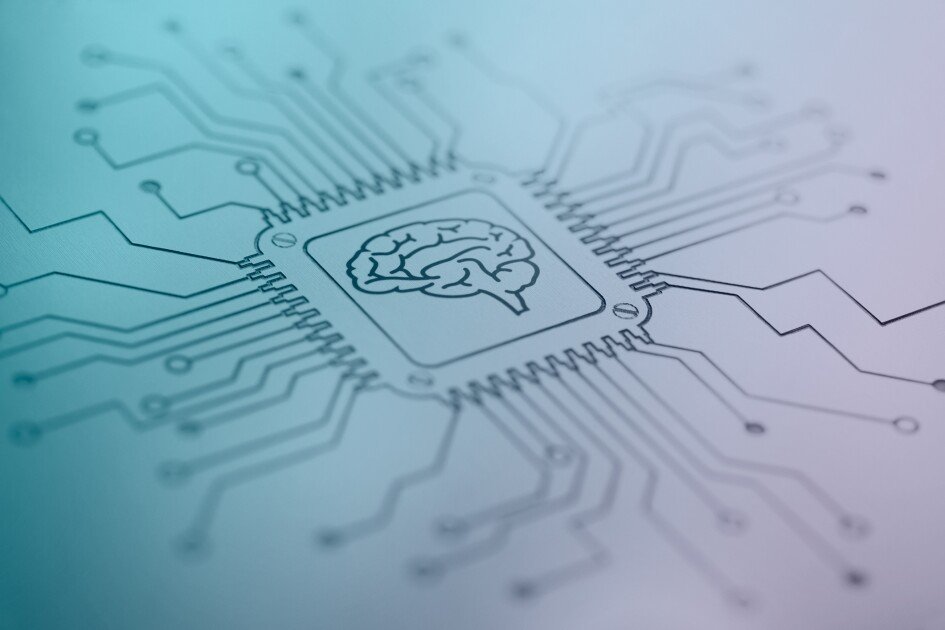Education
Instructure’s New Deal with OpenAI Aims to Move AI Beyond ‘Point Solutions’

Ed-tech company Instructure, makers of the widely used Canvas learning management system, and OpenAI are partnering to give teachers broad capability to harness artificial intelligence for a broad array of day-to-day tasks.
The effort is part of a larger framework Instructure has developed to allow AI integration capabilities into its platforms, called IgniteAI, the company said. The tool is meant to allow educators and students to use AI directly within Instructure’s systems, to accomplish tasks such as creating quizzes, generating rubrics, summarizing discussions, and aligning content to academic outcomes.
As OpenAI embeds its advanced AI models into Canvas, the companies say the integration is meant to allow educators to design AI-guided tasks through an experience similar to a chatbot and incorporate them into their lessons and assignments.
The tool is meant to give control to teachers by allowing them to customize learning prompts, set up and review how the chatbot interacts with students, and determine the parameters of how outcomes are evaluated, Instructure said. All student interactions within the platform are visible to the teacher, and student data is not shared with OpenAI, the organization added.
The tool will also allow for coaching tips to be built into teacher-facing features to provide pedagogical recommendations on how to apply feedback.
The two organizations cast the new partnership as a step forward in giving educators access to artificial intelligence integrated in a seamless way across a variety of uses, rather than asking them to rely on fragmented, standalone AI tools.
“We believe this is the direction [AI] is headed in, as opposed to point solutions that serve a single function,” Melissa Loble, Instructure’s chief academic officer, told EdWeek Market Brief. “We build our agents so they can really integrate and interact with Canvas [and its users.]”
Founded in 2015 and led by Sam Altman, OpenAI has emerged as one of the most prominent developers of artificial intelligence systems. It is perhaps best known for its release three years ago of the generative AI tool ChatGPT.
Join Us In Person at the EdWeek Market Brief Fall Summit
Education company officials and others trying to figure out what’s coming next in the K-12 market should join our in-person summit, Nov. 3-5 in Denver. You’ll hear from school district leaders on their biggest needs, and get access to original data, hands-on interactive workshops, and peer-to-peer networking.
The K-12 industry can expect to see a continued wave of education platforms strategically partnering with large language model developers to tap into AI’s power to help teachers and students, said Erin Mote, CEO of InnovateEDU, a nonprofit focused on improving policy and practice in schools through technology. Mote also heads the EDSAFE AI Alliance, a coalition of organizations that focus on the safe and equitable use of AI in education.
The project taken on by Instructure and OpenAI “mirrors a larger strategic shift seen in sectors like finance and healthcare,” Mote said in an email, “where leveraging frontier models through these partnerships has become the primary method for rapidly upscaling technological capabilities.”
As education companies continue to scale their offerings in AI, many of them are focusing on tools designed to help classroom educators, specifically, by reducing administrative, rote tasks and helping them create lessons. Targeting the educator audience is seen by some organizations as less risky than developing tools for students, as K-12 communities weigh concerns about data privacy and bias associated with the technology.
“We’re seeing AI-powered lesson-planning tools rapidly emerge as a primary application of AI in education,” Mote said.
Companies are focusing on teachers because there’s overwhelming user demand, she added.
A 2024 RAND study identified lesson-planning as a dominant use case of AI. In addition, surveys published by Gallup and the Walton Family Foundation this year show that 6 in 10 teachers already use AI for planning or grading.
“[Instructure’s] IgniteAI tool targets administrative efficiency through agentic AI, which directly addresses the administrative burden that teachers cite as a leading cause of burnout,” Mote said.
However, as Instructure continues to enhance the platform, it will be important to “guarantee it is safe, accountable, fair, and transparent,” she added. Companies across the education sector, Mote said, should also commit to publishing “research and efficacy studies to deepen the sector’s knowledge of what works, for whom, and under what conditions.”
Education
Ram Chella – Colleges Of The Future: AI Transforming Education And Employability

Q. How do you see the shift in approach in higher education with AI becoming an integral part of the workspace and learning?
Education in India is standing at an inflection point. For decades, colleges have measured success by degrees awarded, not by the employability of their graduates. But in the age of artificial intelligence (AI), that equation is being rewritten.
The next generation of top 100 colleges to watch will not be the ones that fear AI. They will be the ones that integrate AI elegantly into their workflow—enhancing learning, improving knowledge retention, and producing students with ‘Proof of Readiness’ rather than just certificates.
Traditional classrooms focus on theory. Employers, however, demand proof. The new model of education flips the script: students are trained and assessed in AI-powered practice environments that validate not just what they know, but how ready they are to perform.
From ‘Degrees to Data-Backed Readiness,’ this shift has far-reaching impact. For students it means higher retention, greater confidence, and stronger employability; for colleges it is a decisive move from degree-centric to outcome-centric reputations; for India it is the ability to uplift 100 million learners at scale, fueling national competitiveness.
Q. Could you share a few examples as ‘a case in point’ that are becoming ‘Colleges of the Future’?
Across India, pioneering initiatives are breaking away from the monotone of certificates and resumes. They are proving that employability in the AI era means readiness, not paperwork:
-
AICTE (All India Council for Technical Education) is redefining how education meets industry. Instead of only accrediting degrees, AICTE is actively integrating AI to match students with industry needs—focusing on skills, outcomes, and readiness rather than just certificates.
-
SWAYAM Plus is shifting from being a digital catalogue of courses to becoming an AI-enabled readiness platform, where learners don’t just “complete” modules but demonstrate skills mapped to real employer demand.
-
Apna Jobs has already powered 7 lakh+ interviews through AI-driven skill-matching, eliminating the inefficiency of resumes. By using AI to perform the “non-scalable” tasks—connecting people with the right opportunities at scale—Apna is showing how technology can redefine placements.
These aren’t just incremental improvements. They represent a systemic break from the past—moving India’s education ecosystem from certificates and resumes to data-backed readiness and employability.
Q. Given the urgency of ‘now,’ why does AI-integrated learning matter beyond campuses?
The push for transformation is not just coming from students or regulators. It is being demanded by employers who are struggling to find talent that is not only qualified on paper but genuinely ready to perform on ‘Day One.’ Hiring managers across IT, BFSI, and manufacturing echo the same frustration: traditional degrees tell them what a student has studied, but not whether that student can actually deliver results.
AI-powered readiness models solve this gap. By validating practice, fluency, and applied skills, they give companies the confidence to hire faster and at scale. It isn’t just good for employers—it’s essential for India’s competitiveness.
Consider the numbers: India produces nearly 1 crore graduates every year, yet industry studies show that less than 30% are considered employable. Closing this gap is not an academic issue; it is an economic emergency. If even 10% more graduates enter the workforce job-ready, the productivity impact could add billions to India’s GDP annually.
This is why the ‘Colleges of the Future’ are not waiting. They are breaking free from the monotone of certificates and resumes, proving that readiness is the new currency of employability.
Q. What is the big picture in your opinion?
The overarching scenario is that it is not about survival. This is about transformation at scale. The future of India’s workforce depends on how boldly higher education institutions embrace AI—not as a threat, but as a partner. In fact, the foundation should start at the school level.
And as we celebrate these Colleges of the Future, we set the stage for a new era where education does not end with a certificate. It ends with readiness for the world of work.
Education
Best UK universities for electrical & electronic engineering – league table

Engineering of electrical and electronic systems, microelectronics, silicon devices and nanotechnology
Education
Best UK universities for economics – league table

The study of what influences income, wealth and wellbeing, and how this can be implemented into policy
-

 Business2 weeks ago
Business2 weeks agoThe Guardian view on Trump and the Fed: independence is no substitute for accountability | Editorial
-
Tools & Platforms1 month ago
Building Trust in Military AI Starts with Opening the Black Box – War on the Rocks
-

 Ethics & Policy2 months ago
Ethics & Policy2 months agoSDAIA Supports Saudi Arabia’s Leadership in Shaping Global AI Ethics, Policy, and Research – وكالة الأنباء السعودية
-

 Events & Conferences4 months ago
Events & Conferences4 months agoJourney to 1000 models: Scaling Instagram’s recommendation system
-

 Jobs & Careers2 months ago
Jobs & Careers2 months agoMumbai-based Perplexity Alternative Has 60k+ Users Without Funding
-

 Podcasts & Talks2 months ago
Podcasts & Talks2 months agoHappy 4th of July! 🎆 Made with Veo 3 in Gemini
-

 Education2 months ago
Education2 months agoMacron says UK and France have duty to tackle illegal migration ‘with humanity, solidarity and firmness’ – UK politics live | Politics
-

 Education2 months ago
Education2 months agoVEX Robotics launches AI-powered classroom robotics system
-

 Podcasts & Talks2 months ago
Podcasts & Talks2 months agoOpenAI 🤝 @teamganassi
-

 Funding & Business2 months ago
Funding & Business2 months agoKayak and Expedia race to build AI travel agents that turn social posts into itineraries

